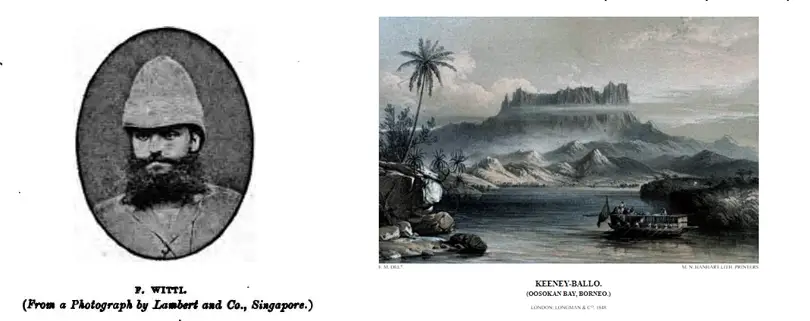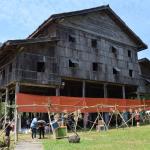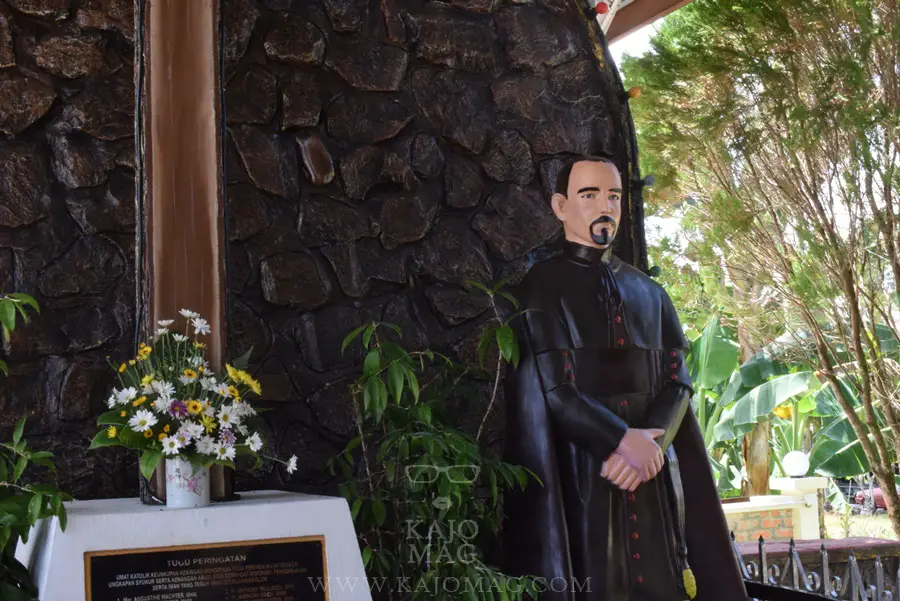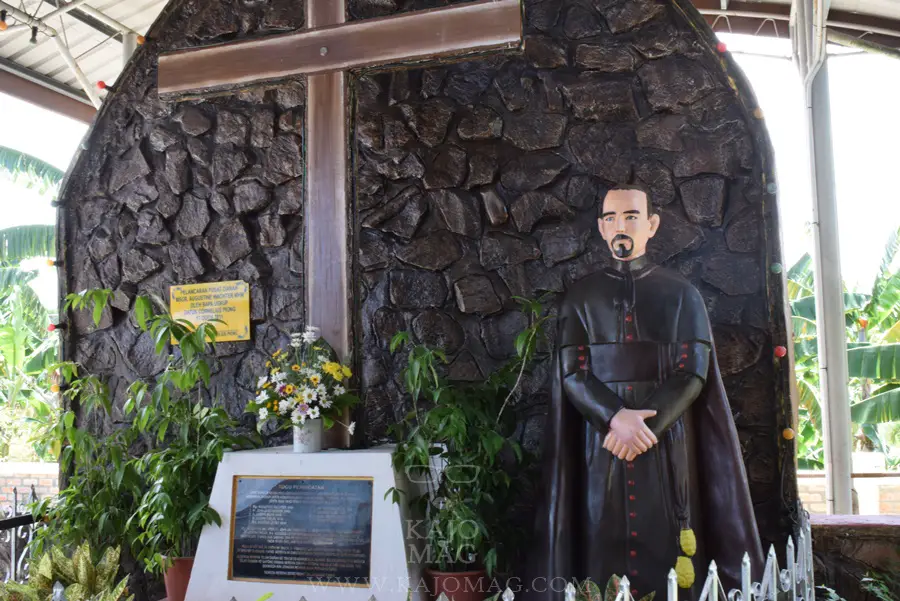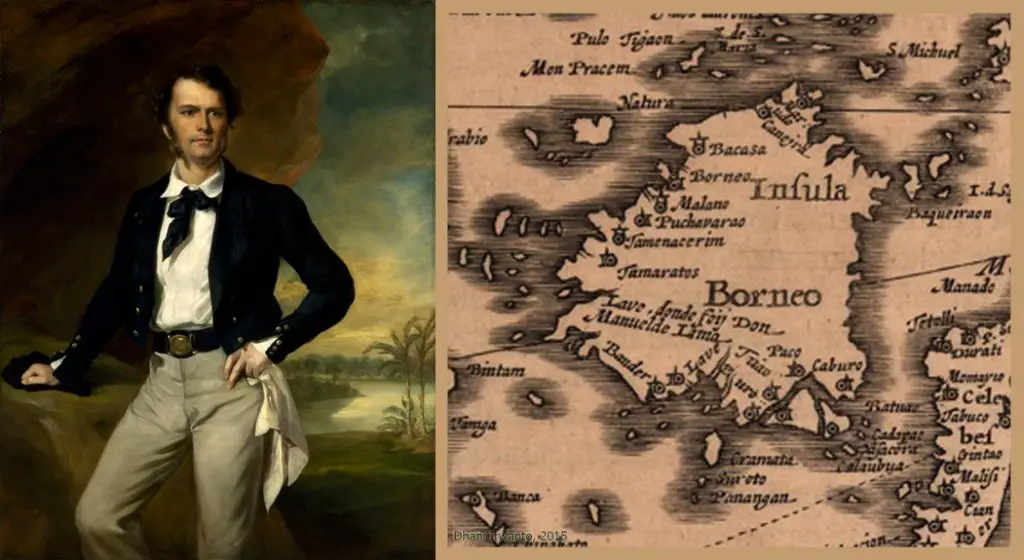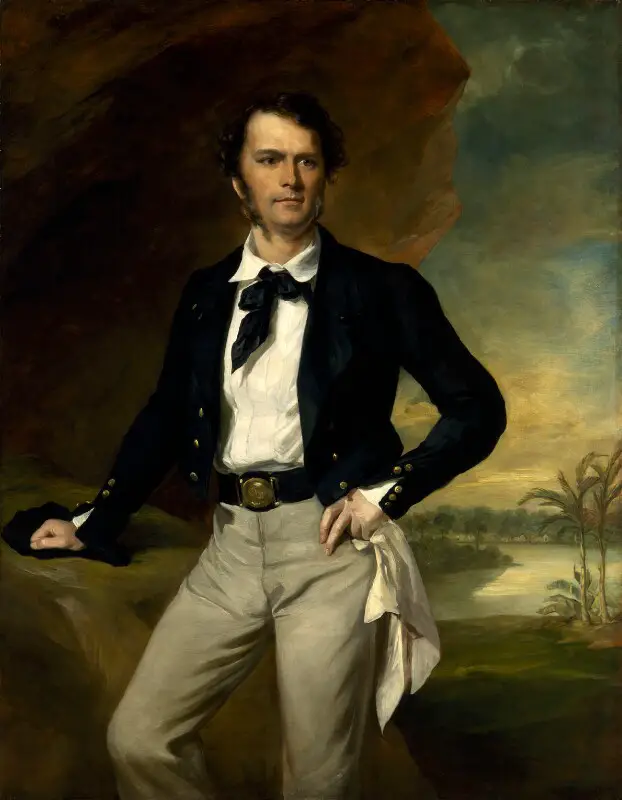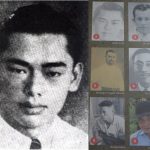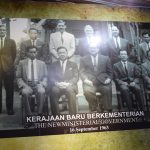Francis Xavier Witti or also known as Franz Witti, was one of the first few Europeans to explore the northern part of Borneo.
He was a former navy officer in the Austro-Hungarian Empire and avid explorer.
When Witti came in contact with German adventurer and diplomat Baron Gustav von Overbeck during his journey through Southeast Asia, he was introduced to North Borneo.
Witti was thrilled to know that this place had never been completely explored by any Europeans before.
After his short visit in North Borneo, he went to Europe to look for a job with the British North Borneo Company.
However, he was scared that his nationality would prevent him from getting the job, he then decided to return to Borneo on his own.
In North Borneo, Witti conducted various survey reports in the area. Hence, the British North Borneo Company finally officially hired him in 1877.
Under the company, Witti was in-charge of carrying out expeditions of exploration while identifying the natural resources in the area.
Through these explorations, he became the first European to visit some of the places in North Borneo.
The founding of Kudat town and debunking the idea of Kinabalu Lake
During one of his explorations, Witti discovered oil about 26 km outside present-day Kudat town.
It is assumed that this might be the reason why the Company chose Kudat as their first settlement in British North Borneo.
The town was officially founded on Dec 7, 1881.
Besides the discovery of oil, Witti was one of the first explorers who confirmed that there was no such thing as Kinabalu lake.
In the olden days, the locals believed that there was a great lake at the peak of Mount Kinabalu.
However, the earliest documented expedition to Mount Kinabalu in 1851 and 1858, unveiled the fact that there was no lake.
How did the local people come to believe there was a lake on the submit?
It was believed that during the Ice Age, Mount Kinabalu was covered with ice sheets and glaciers moving slowly down its slopes. As the glaciers moved down, it was possible that the locals could only see the peak. Since it is surrounded by glistening sheets of ice, it looked like there was a lake right below the summit.

The summary of Franz Witti’s journey
Admiral Richard Charles Mayne (1835-1892) was a Royal Navy officer and a fellow of the Royal Geographical Society.
During a meeting of the society on Jan 30, 1888, he gave a summary of explorations in British North Borneo.
One of the sources of his presentation for the meeting was Witti’s diaries.
According to his diary, Witti started his journey under the Company from the northwestern end of Marudu Bay on Nov 10, 1880, reaching Papar on Dec 5.
Mayne stated, “This was a long arduous journey, occupying twenty-five days and covering some 150 miles. Passing well to the east of Mount Kinabalu, striking the headwaters of the Sugut river, which flows into the north of Labuk Bay on the east coast, and then turning west to the Padas and Papar rivers, he passed through several villages, varying in size, at all of which the party were hospitably treated.”
Mayne pointed out that Witti had to bribe one of the natives to take him exploringaround Mount Kinabalu. While the local was happy to have a petticoat for his wife (thanks to Witti’s bribery), he was reportedly so scared a big fish would devour them once they discovered the legendary Kinabalu lake. Thankfully, the big fish and the lake never existed in the first place.
As for Witti’s second journey which took place between May 13 and June 17, 1881, he travelled from the head of Marudu Bay to east heading to Sandakan.
In Witti’s own words, he described how excited his local companions were. He wrote, “They questioned one another, ‘What will my employers say? What will our old men at Tempassuk say?’ is the query with me. We did not achieve great things, but the little we did outside the round of everyday business will serve the purpose which it was done; whenever we came to a place for the first time, there we dare show our face again.”
Witti’s third and last journey – which he lost his life – was undertaken on Mar 9, 1882, nearly a year after the second.
He travelled through Kimanis until he reached Pagalan river.
According to Mayne, Witti’s journal ended abruptly on Mar 28. Interestingly, the Dutch sent the copy of his diary to the society some time after Witti’s death.
It is understood that he arrived in a place called Limbawan, somewhere near Keningau. There the local Murut chief named Jeludin warned him not to travel to Peluan (Paluan). This is because there was a feud between Jeludin’s country of Nabai and Peluan.
Nabai and Peluan are tribes belonged to the Murut ethnic group. In the olden days, Murut Nabai lived mainly in Keningau while the Murut Peluan were found near the Padas river in Tenom.
The last European to see him alive was his colleague L.B von Donop in Tambunan. His final letter was written on June 11, 1882, writing from “Naloyan, Dalit”.
The letter was a reply to his boss Sir William Hood Treacher, the first Governor of North Borneo (1881-1887).
Treacher ordered Witti to return to the coast. Instead, he insisted on travelling into the interior where he met his death only a few miles from the Dutch border of Kalimantan.
British Governor of North Borneo’s account of Franz Witti’s death
Speaking of Treacher, Witti’s death was recorded in his book, British Borneo: sketches of Brunai, Sarawak, Labuan and North Borneo (1891).
Treacher gave his account on what happened on that fateful day when Witti died.
“The two principal pioneer explorers of British North Borneo were Witti and Frank Hatton, both of whom met with violent deaths.
“Witti’s services as one of the first officers stationed in the country, before the British North Borneo Company was formed, have already been referred to, and I have drawn on his able report for a short account of the slave system which formerly prevailed.
“He had served in the Austrian Navy and was a very energetic, courageous and accomplished man.
“Besides minor journeys, he had traversed the country from West to East from North to South, and inland to the headwaters of the Kinabatangan and Sambakong Rivers, that he was murdered by a tribe, whose language none of his party understood, but whose confidence he had endeavoured to win by reposing confidence in them, to the extent even of letting them carry his carbine.
‘He and his men had slept in the village one night, and on the following day some of tribe joined the party as guides, but led them into ambuscade, where the gallant Witti and many of his men were killed by sumpitan (blowpipe).
‘So far as we have been able to ascertain the sole reaction for the attack was the fact that Witti had come to the district from a tribe with whom these people were at war, and he was, therefore, according to native customs, deemed also to be an enemy.”
The last two months of his diary and geographical records that he took were reportedly lost during the attack.

Franz Witti was killed by a spear not by blowpipe
Meanwhile, Witti’s colleague and a fellow explorer recorded what he heard had happened in a letter to his mother from Kudat on Oct 28, 1882.
He told his mother, “Poor Witti! He was travelling in a Murut country, and having slept in a native’s home, left the place next morning with his eleven men. They had a small native-made boat, in which they were going down stream. They came to a shallow place, where every one had to get out into the water and drag the boat. The rifles and weapons were put in the perahu. Witti waded ashore to make some notes. In the middle of all this they were attacked by some hundreds of savages, who fell upon Witti and his unfortunate men with spears, sumpitans, swords etc. Witti, it is said, had a spear thrust through his body; and even after receiving this awful wound, he turned and fired his revolver six times. Four cartridges were damp and did not explode, with the other two he killed two men. Of the rest of his followers, three escaped to tell the sad tale, the others were killed or died in the bush.”
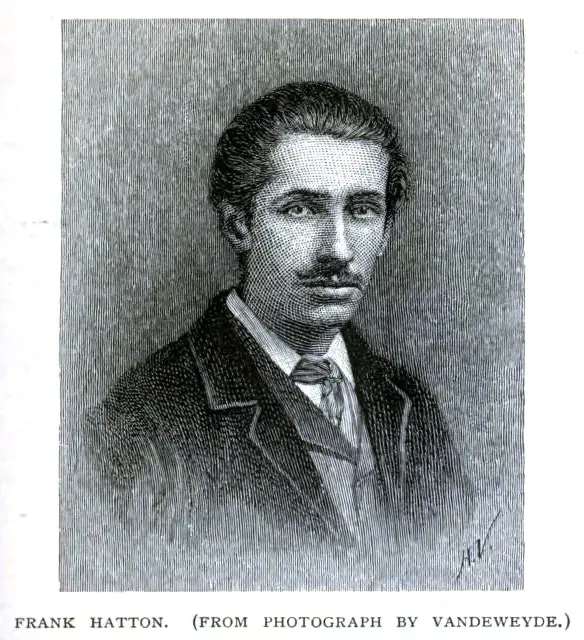
Franz Witti knew about the dangers that came with his exploration
Exploring a new country where headhunting was still rampant always came with a price. And the cost of that price for these explorers sometimes is their heads.
As for Witti, he knew the circumstances surrounding his work as an explorer. It was believed that before Witti left Kimanis, he made a will and arranged for the settlements of all his affairs.
As Owen Rutter in British North Borneo: an account of its history, resources, and native tribes wrote, “His (Witti’s) intrepid courage, unfailing humour and disregard or personal comfort mark him as a true explorer, his tact in dealing with natives and his great black beard made him remembered by those among whom he went. ‘Whenever we came to a place for the first time,’ he says in one of his diaries, ‘there we dare show our faces again,’ and the fact he should have met his death at the hands of unthinking savages whose cause he had at heart does but enhance the tragedy of his fate.”
After his death, there were rumours of his body coming through the river flowing into the Dutch territory (Kalimantan). However, this rumour has never been confirmed.
The news of Witti’s death in the hand of headhunters was certainly viral-worthy even in the 19th century. It even made it to the New York Times on Oct 30, 1882 months after his death presumably in June, with the headline “Slain by Borneo Savages; Mr Witti’s Sad Fortunes in the Land of the Head-Hunters.” He was just 32 years old when he died.
In Sandakan, the Chartered Company Monument is built in dedication to the British servicemen or employees who were killed at the end of the 19th century. These servicemen included Witti and Hatton, who died in 1883.

